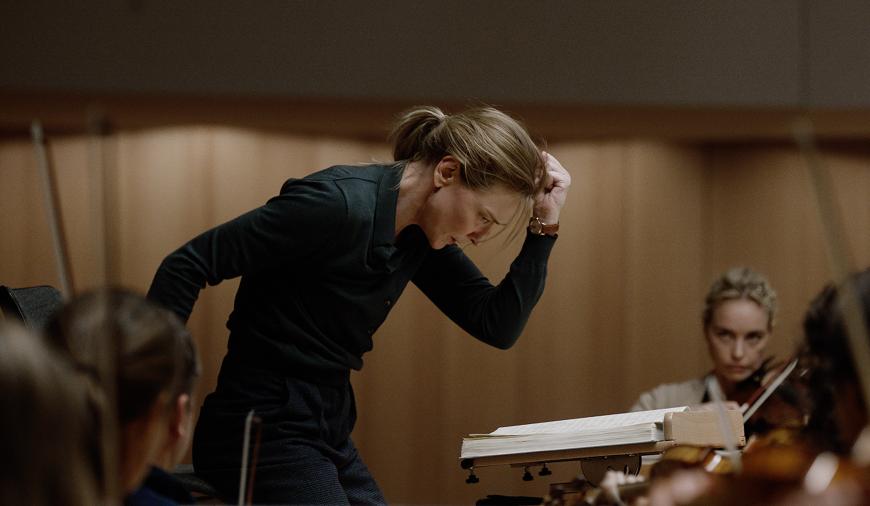
Todd Field’s 2022 film Tár, starring Cate Blanchett, has generated an immense amount of press, an amount that’s out of proportion to the number of people who’ve actually seen it. The New York Times estimated that the film cost at least $35 million in production and marketing expenses, while its box office take has been roughly $15.5 million worldwide. The waning pandemic continues to keep people out of theaters, but Tár has been streaming since Nov. 15 and has been out on DVD/Blu-ray since Dec. 20.
Of course, film critics across the country have all reviewed Tár, but beyond that, two New York Times opinion columnists, the novelist Zadie Smith, Los Angeles Times music critic Mark Swed, and conductor Marin Alsop have also had their say. The unusual range of commentators owes to the fact that the film’s titular character, Lydia Tár, is a renowned conductor and, when the story starts, the chief conductor of an orchestra in Berlin. (Presumably this is the Berlin Philharmonic, but it’s not stated explicitly.)
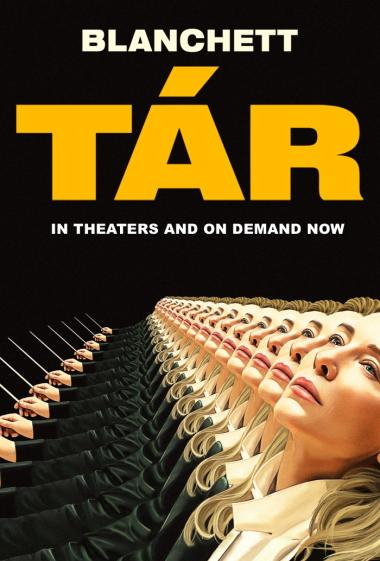
In the world of the film, that appointment followed stints at The Cleveland Orchestra, The Philadelphia Orchestra, the New York Philharmonic, the Boston Symphony, and the Chicago Symphony, once known as the Big Five. Tár also holds a doctoral degree in musicology from the University of Vienna, and she studied conducting with Leonard Bernstein. We find all of this out in the film’s opening sequence, read by New Yorker writer Adam Gopnik, playing himself while interviewing the fictional Tár. She’s also a composer, but we never hear more than a few notes of her current project.
The questions and controversies around Tár are all over the place: Is it a horror film? Is it a comedy? Is it all, or partly, a dream? Is it about “cancel culture”? Is Tár imagining things? Is it regressive? When, exactly, does it take place?
What there’s not much doubt about is the sheer quality of the acting and filmmaking. Blanchett gives a riveting performance as the elusive, mercurial conductor who is simultaneously as self-confident as one needs to be to lead an orchestra but also quietly panicking as her privileged life and lifestyle come under threat.
Tár’s past and present are catching up with her, for it becomes apparent that she’s a bully to her orchestra and to students in a master class, that she’s gaslighting her spouse (who is also the concertmaster of her orchestra), and that she has a history of sexual relationships with young female conductors whom she’s supposed to be mentoring. Over the course of the film, her life disintegrates. Sharon, her spouse, realizes the extent of the lies. One of the conductor’s former mentees, Krista Taylor, behaves erratically and then commits suicide. It becomes evident that Tár has actively undermined the student’s career.
The film focuses strongly on Tár and her story, but not to the point where you could write a documentary narrative to go with it. The other actors give strong performances as well. Nina Hoss, possibly best known to U.S. audiences from her roles in A Most Wanted Man and Homeland, plays Tár’s violinist wife with a (justifiable) air of suspicion and discontent. You definitely wonder what’s been going on in their relationship, and for how long.
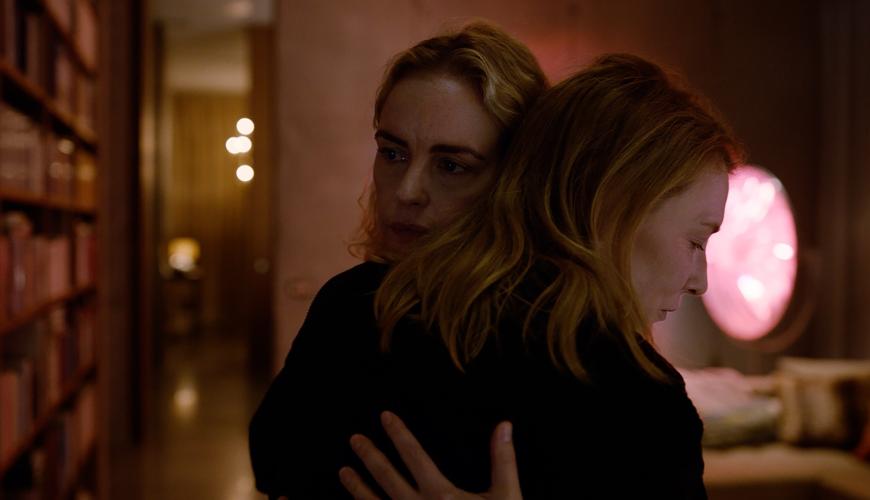
Noémie Merlant is Francesca, a young conductor serving as Tár’s personal assistant but getting little help from Tár in her own conducting career. Her suspicions grow throughout the film, and eventually she abandons Tár after realizing Tár’s role in the increasing distress and eventual suicide of Krista. Mark Strong plays Eliot Kaplan, an obsequious investment banker and amateur conductor — and funder of a conducting fellowship program — who is obsessed with Mahler’s Symphony No. 5 and with Tár’s score and markings for the work.
Field’s script is elliptical and suggestive, virtuosic in how it cuts back and forth among different incidents, presenting short vignettes rather than a straightforward narrative. The viewer needs to assemble all of these fragments to arrive at something resembling a coherent story. Tár’s gaslighting and lying don’t help, nor do some incidents that seem inexplicable, but you’re enough outside her head that it’s usually clear when she’s lying or dodging the truth. Florian Hoffmeister’s coolly vivid cinematography and Monika Willi’s editing capture the slippery nature of the plot perfectly.
For all of the technical and dramatic excellence of Tár, I was largely repulsed by it for two reasons: the film’s many outright errors concerning the orchestral world and the character of Tár herself.
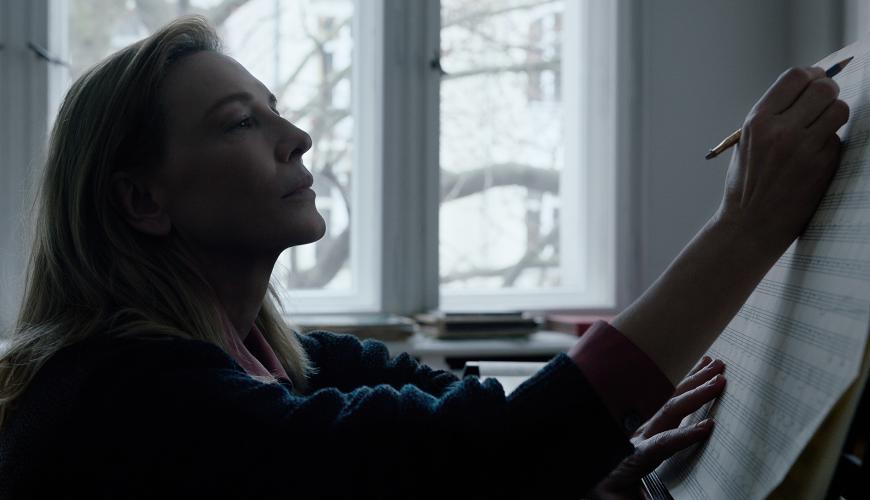
Films about classical music go back to at least the 1930s. The light and charming One Hundred Men and a Girl, from 1937, starred Deanna Durbin as the daughter of an unemployed trombonist and the conductor Leopold Stokowski, whose character almost accidentally finds himself conducting an orchestra of the unemployed. Stokowski would go on to shake Mickey Mouse’s hand in the cartoon classic Fantasia. Tous les Matins du Monde (All the mornings of the world), from 1991, put the viola da gamba front and center and made the composers Marin Marais (portrayed by Gérard Depardieu) and his teacher Monsieur de Sainte-Colombe (Jean-Pierre Marielle) as close to household names as any 17th-century French composers will ever be.
Exaggerations and fantasies are common in films about composers and classical music. There’s the potty-mouthed Mozart of Amadeus, and there’s Ken Russell’s Lisztomania, described by Wikipedia as a “surreal biographical musical comedy” about Franz Liszt. But while nobody expects Tár to be a documentary, it gets so much wrong that either it’s deliberately distorting reality for the sake of the plot or nobody bothered to do the research.
Some of the errors are deeply misleading and downright offensive. Take this section of the interview with Gopnik:
TÁR
But as to the question of gender bias, I really have nothing to complain about. Nor, for that matter, should Marin Alsop, JoAnn Falletta, Laurence Equilbey, Nathalie Stutzmann. There’s so many incredible women who came before us, women who did the real lifting.
GOPNIK
That’s fascinating. Who for instance?
TÁR
OK, sure, first and foremost, Nadia Boulanger. That would be the happy example. The sad one would be Antonia Brico, who by all accounts was an incredible conductor but was ghettoized into the nonglamorous status of “guest conductor” and essentially treated as a dog act.
That Boulanger and Brico worked hard to conduct orchestras is indisputable (Brico’s career included starting her own ensemble!), but it’s absurd to claim that the current crop of women conductors has nothing to complain about. We live in a world where only five of roughly 130 professional German orchestras are conducted by women. Only two major American orchestras have female music directors: the Atlanta Symphony, led by the French conductor and contralto Stutzmann, and the Buffalo Philharmonic, where Falletta has been music director since 1998.
Worldwide, only a handful of women lead major orchestras or opera companies, while some men conduct two major organizations, sometimes thousands of miles apart. (Yes, I’m looking at you, Andris Nelsons, Gustavo Dudamel, Jaap van Zweden, Yannick Nézet-Séguin, and Klaus Mäkelä.) It’s simply wrong to state that women don’t have reasonable complaints about gender bias in how conductors are hired.
Then there’s how Tár behaves toward her orchestra. She talks down to them in rehearsals. She undermines the audition process, which is set up to hide the identities of those who are auditioning, and handpicks a cellist she finds attractive. She then imposes the cellist, who has barely become an orchestra member, as the soloist in the Elgar Cello Concerto, which she decides will be the companion piece for a recording the group is about to make of Mahler’s Fifth Symphony.
An orchestra completing a major recording project would never leave such a decision to the last minute, nor would a Mahler cycle include an Elgar recording. One of the Mahler song cycles would be the typical choice to fill out such a set.
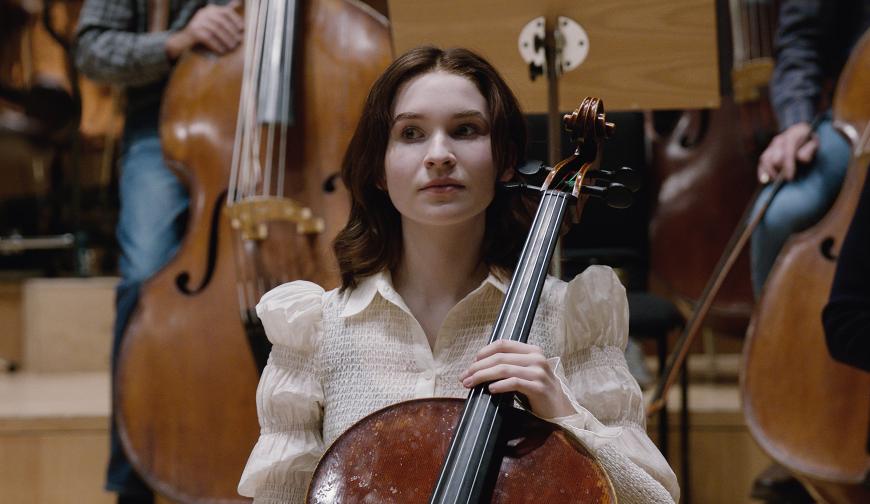
I spoke with Falletta about Tár, which she had seen in the theater not long after it was released. As a conductor and music director since the 1980s, and as a woman who has seen many changes in the profession, she offers a special perspective on the culture of conducting. She confirmed that this isn’t how 21st- and late-20th-century conductors behave.
“The rehearsals are not run in a typical way. [Tár is] brusque. Her comments are sometimes hurtful. The European setting probably makes it more believable for a U.S. audience. But the thing that puzzles me is that the conductor is seen as all-powerful, but it’s not like that anymore. There’s power, but the conductor has a tremendous responsibility to the players, the organization, the audience. The film isn’t about how this really works.”
She went on to note that conductors can no longer follow the models of Arturo Toscanini, who had fits of temper during rehearsals, or Herbert von Karajan, but Tár seems to. “She’s almost unknowable, with armor that you can’t penetrate. That was the old-school conductor, too — never questioned, never open to criticism.” In the United States, “corporate culture changed; there was more team building, more open communication within organizations. This happened in orchestras, too.” There’s an expectation of collaboration between conductors and orchestras.
The Berlin Philharmonic, the model for Tár’s orchestra, is self-governing, and this means that the musicians choose their own chief conductor. In the United States, professional orchestras are unionized. A conductor violating norms the way Tár does would not last long in either location and, in fact, probably wouldn’t be hired in the first place. Word gets around about how conductors behave.
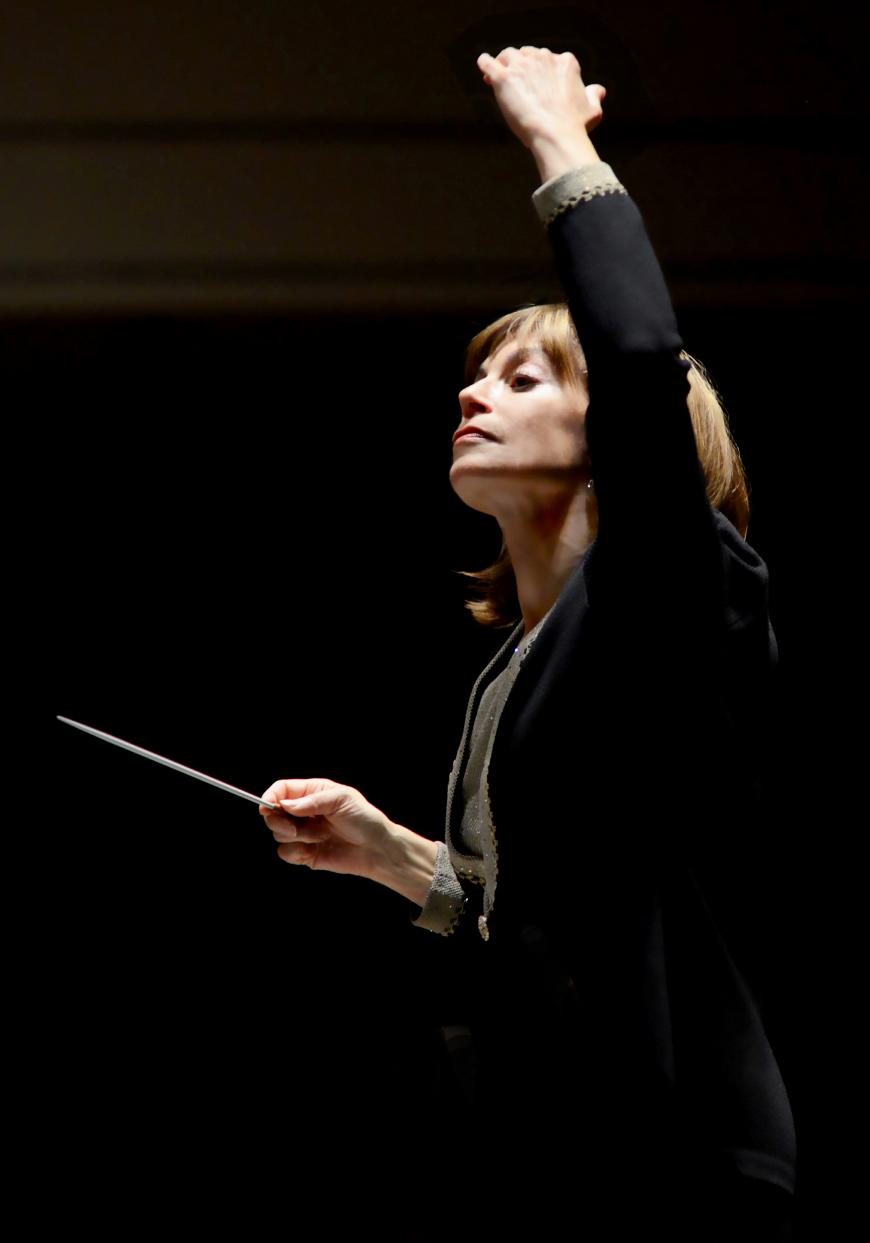
Falletta discussed the complicated and not very believable timeline of Tár’s career. She has been with her orchestra since 2013, and the film takes place approximately in the present. She holds a doctorate, which would typically take at least five years of study, and she has had jobs at five orchestras before her present job.
This in itself is unrealistic; even if Tár had been an assistant conductor at the first two of the five, music director contracts typically run five to seven years, and conductors often remain in a single position for 15 years or more. Given that Tár also appears to be in her 40s, there’s no way she could have gotten her Ph.D., worked at so many orchestras, and studied with Leonard Bernstein, who died in 1990. Falletta noted that “at the lowest point in [Tár’s] life, she goes home [to her childhood home] and starts watching Bernstein. He was not her mentor but her idol.”
Falletta confirmed the unrealistic nature of other plot points in the film, such as the soloist in the Elgar concerto. “This is something I’ve never seen. When an orchestra member plays a solo work, it’s always the principal, not a section instrumentalist.”
Then there’s the film’s fetishizing of Tár’s performing score. Kaplan, the would-be conductor, is clearly modeled after Gilbert Kaplan, a wealthy man who obsessed about Mahler’s Symphony No. 2. He studied the work, made donations to orchestras that enabled him to conduct it, and even recorded it.
The fictional Kaplan wants to see Tár’s score for her performance markings, and she won’t show him. Said Falletta, “Her secrecy with her scores bothered me. She’s accepting Eliot’s largesse, and he wants to discuss Mahler with her, but she just won’t help him. She seems unwilling to share. She’s staying in expensive places. He pays for her travel. She has an odd friendship with him. Who steals the score [which disappears before the planned concert/recording session]? Was it her partner? Her assistant? Is it Eliot? [Field] doesn’t seem to want to make this clear.”
Not only that, as Falletta further noted, performance markings are extremely personal for each conductor. They’re notes that help conductors achieve their personal interpretation of a work, but that interpretation has to grow organically from each conductor’s understanding of the music. Even if Kaplan got to see the score, he wouldn’t be able to recreate Tár’s interpretation, nor would her markings necessarily be meaningful for his own performance.
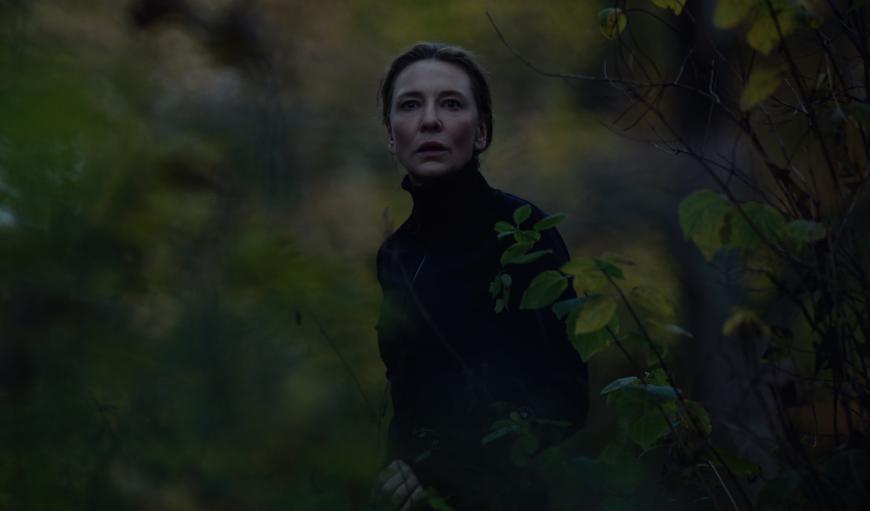
Another point of discussion about the film is what genre it is and what it’s really about. Some commentators have suggested that it might somehow be a comedy, but I just can’t see it. The earliest scenes, which show you aspects of the conductor’s personality, might seem dryly witty to some, but for me, the only funny moment was a single inside-baseball reference to another conductor’s “nostalgia for pre-war Kalmus miniature scores.”
Falletta agrees that Tár feels more like Alfred Hitchcock’s Vertigo or similar psychological suspense films. Over the course of the story, Tár disintegrates. She hears strange noises in her apartment and screaming while she’s out on a run. She follows the new cellist into a decaying building, gets lost, falls, bruises herself, and then claims she was attacked. After she’s fired from her job, she storms into a performance that Kaplan is conducting, makes a tremendous scene, and has to be removed by security. “Other films where people disintegrate like this — usually it’s because of alcohol or drugs.” Falletta said. “Here it’s something different.”
What’s different is that Tár’s own actions have brought her down. She is losing everything she has worked for because of her bullying treatment of everyone around her: her partner, her students in a master class, her assistant conductor Sebastian (whom she forces out), a small child who has bullied Tár and Sharon’s daughter, her conducting student Krista.

Unlike so much in the film, this is true to life. In the last few years, conductors Charles Dutoit, the late James Levine, and Daniele Gatti all lost jobs because of alleged sexual abuse. Singers David Daniels, Plácido Domingo, Vittorio Grigolo, and Matthew Stump have faced similar allegations, with Daniels and his husband formally indicted on charges of sexual assault. William Preucil, former concertmaster of The Cleveland Orchestra, and Stephen Shipps, violin professor at the University of Michigan, were both fired for sexual misconduct, and Shipps was charged with two counts of transporting a 16-year-old girl across state lines to have sex with her.
So that part of the film is, on one hand, very realistic; you might lose your job if you’re credibly accused of sexual assault or other sexual misbehavior, particularly if you’re charged with a crime. Among the many allegations of such behavior in the music world, I have yet to see a woman accused, so it does seem bizarre that Field landed on a lesbian predator for this film. Alsop was appalled by this, not least because Tár seems to have been modeled on the former Baltimore Symphony music director, a lesbian who is raising a child with her partner, an orchestra musician — and against whom no such allegations have ever been raised.
Even with all of these inaccuracies, the film has much to offer. Falletta said that she was “dazzled” that someone had made a film of this cinematic quality about classical music and featuring such great music. Blanchett has been nominated for an Academy Award for Best Actress, and Field is up for Best Director. The film has been nominated for Best Picture, Best Original Screenplay, Best Film Editing, and Best Cinematography.
So go see Tár. You might wind up tearing your hair out, you might be repulsed by the title character, and you might be thrilled by the sheer quality of the film, all at once.



